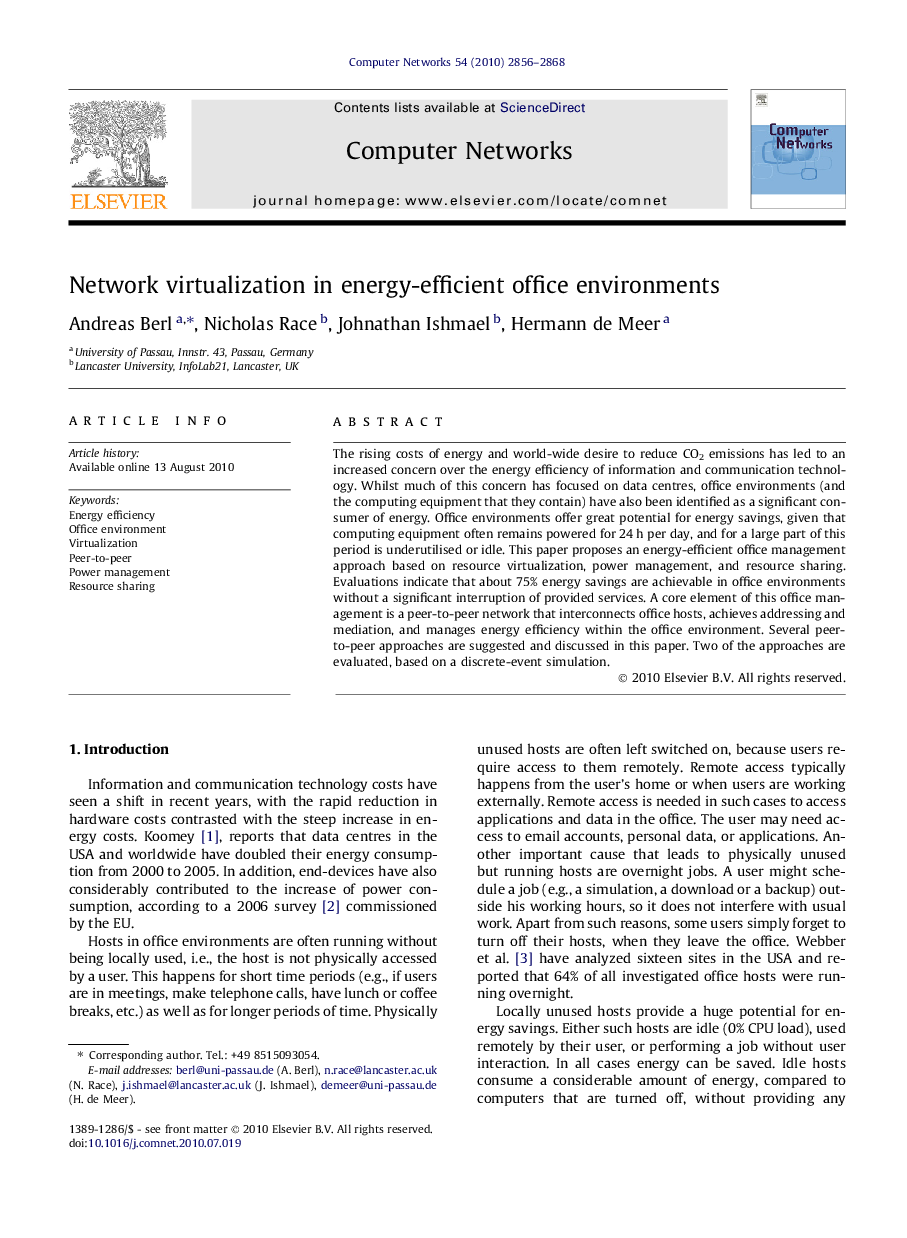| Article ID | Journal | Published Year | Pages | File Type |
|---|---|---|---|---|
| 451050 | Computer Networks | 2010 | 13 Pages |
The rising costs of energy and world-wide desire to reduce CO2 emissions has led to an increased concern over the energy efficiency of information and communication technology. Whilst much of this concern has focused on data centres, office environments (and the computing equipment that they contain) have also been identified as a significant consumer of energy. Office environments offer great potential for energy savings, given that computing equipment often remains powered for 24 h per day, and for a large part of this period is underutilised or idle. This paper proposes an energy-efficient office management approach based on resource virtualization, power management, and resource sharing. Evaluations indicate that about 75% energy savings are achievable in office environments without a significant interruption of provided services. A core element of this office management is a peer-to-peer network that interconnects office hosts, achieves addressing and mediation, and manages energy efficiency within the office environment. Several peer-to-peer approaches are suggested and discussed in this paper. Two of the approaches are evaluated, based on a discrete-event simulation.
